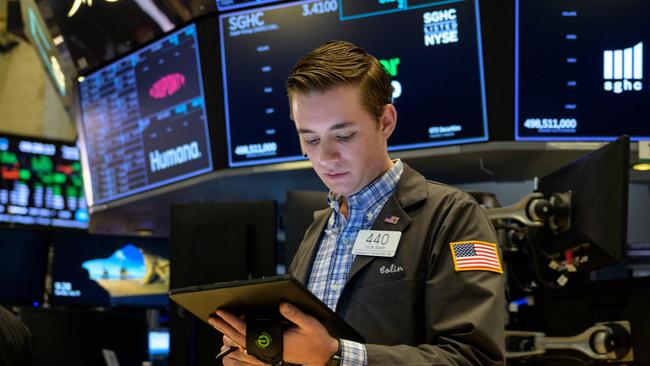It helps to have a framework for thinking about market value
Whether the market is overpriced hardly matters if your focus is the stocks that don’t get attention from the majority of investors.

Some commentators, pointing to the price to earnings ratio for major indices like the S&P 500, argue the next decade will be terrible for shares. Are they right?
Most serious equity investors tend toward investing in companies, not the index. Nevertheless, and remembering the lower the price you pay, the higher your return, it helps to have a framework for thinking about market value.
What return might the market, or investing in shares generally, offer an investor commencing today?
Before answering that question, let me summarise how we arrived at this point with respect to the stockmarket and interest rates.
Amid the global financial crisis, the US Federal Reserve slashed the fed funds rate to zero.
Despite fears, this bold decision did not escalate inflation beyond its sub-2 per cent mark. It enabled the Fed to sustain lenient monetary policies, including low interest rates and quantitative easing, for nearly 13 consecutive years. This period ushered in a record-breaking economic revival spanning more than a decade.
However, as inflation surged in 2021 and continued into 2022, the Fed was compelled to terminate its lenient approach, resulting in a swift hike in interest rates.
Irrespective of whether you subscribe to the idea of further hikes in interest rates to contain persistent inflation, the equally compelling idea that rates will need to be cut amid an inevitable recession – or my own view that rates stay about here for an indeterminate amount of time – you must agree a return to zero rates is unlikely. And that has ramifications for your return expectations.
Given the next decade will render zero rates a fond but distant memory, a recalibration of expected returns seems appropriate.
Investors may also need to consider hurdles confronting corporate profitability, asset value growth, borrowing and heightened risk of defaults, the latter especially among companies I have long described as being from the “Profitless Prosperity” camp.
While I believe the investment climate is unlikely to be one that fuels stupendous equity market gains, I don’t believe the dire prognostications either.
Having said that, relying solely on post-2009 investment tactics such as momentum won’t yield the desired outcomes in forthcoming years either.
In November 1999, just a few months before the Dotcom crash, Warren Buffett presented at the Allen & Company Sun Valley conference to a bunch of tech entrepreneurs and their backers, Bill Gates, and a phalanx of old-world media moguls, billionaires and Hollywood producers.
Buffett’s first slide revealed just two Dow Jones Industrial Average values. The first was for December 31, 1964: 874.13 points. The second was for December 31, 1981: 875.00 points. Buffett noted that during the 17 years highlighted, the size of the US economy grew fivefold, as did sales of the Fortune 500 companies. Yet despite these gains, the stockmarket went nowhere.
I would note that during this period, US 10-year treasury bonds rose from circa 4.20 per cent to almost 14 per cent. Some also note Buffett’s 1964 to 1981 episode where the market produced no return for index investors.
It may be true that returns could be lower in the next decade, particularly if Price Earnings (PE) ratios don’t recover from the depressed levels they recently hit. But it is not the case that anyone expects rates to rise to the 15 per cent seen in 1981 either.
Pointing the Robert Shiller’s CAPE ratio (Cyclically Adjusted PE ratio), some commentators have noted the S&P 500 is on a cyclically adjusted PE ratio of 31 times and that historically, returns have been very low for the index over the subsequent decade when the PE is above 30.
By way of comparison the standard PE ratio for the S&P 500 index is 18.2 times.
But remember we aren’t buying the index. We are buying individual companies. And it is not the case that all company shares are trading on a PE of 31.
The S&P 500, whose PE is described as being historically expensive, is being led by just seven mega-cap technology companies that are dragging the PE of the overall index much higher than it would be if they were excluded.
That means 493 other companies in the index might have meaningfully less exuberant PE ratios.
Secondly, plenty of innovative and growing companies do have much lower PE ratios, reflecting nothing but a lack of popularity.
Roger Montgomery is founder and chief investment officer at Montgomery Investment Management.







To join the conversation, please log in. Don't have an account? Register
Join the conversation, you are commenting as Logout